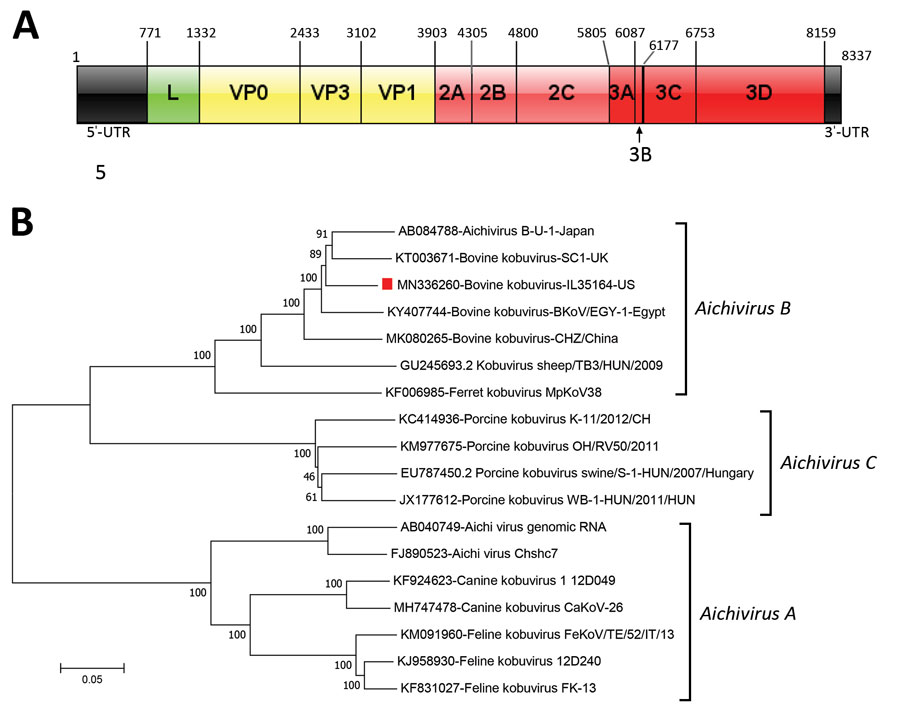Volume 26, Number 1—January 2020
Research Letter
Bovine Kobuvirus in Calves with Diarrhea, United States
Figure

Figure. Genome organization and phylogenic tree of bovine kobuvirus IL35164 isolated from cattle, United States. A) Genome organization with each gene’s initial nucleotide position labeled. The 5′ UTR is located in positions 1–770 and the 3′ UTR is located in positions 8160–8337. B) Phylogenetic tree of complete genomes of 3 Aichivirus species, A, B, and C. The dendrogram was constructed by using the neighbor-joining method in MEGA version 7.0.26 (http://www.megasoftware.net). Bootstrap resampling of 1,000 replications was performed and bootstrap values are indicated for each node. Red square indicates bovine kobuvirus IL35164 identified in this study. Scale bar indicates nucleotide substitutions per site. UTR, untranslated region; VP, viral protein.